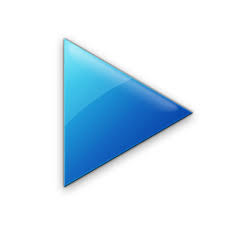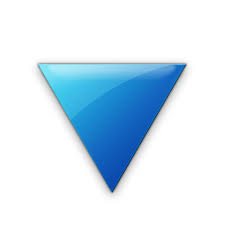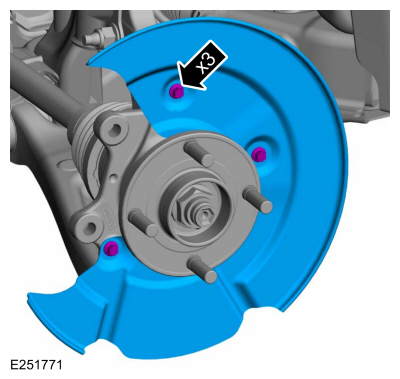Ford Ecosport: Driveshaft / Diagnosis and Testing - Driveshaft
Symptom Chart(s)
Diagnostics in this manual assume a certain skill level and knowledge of Ford-specific diagnostic practices.
REFER to: Diagnostic Methods (100-00 General Information, Description and Operation).
Symptom Chart: NVH
Symptom Chart
| Condition | Actions |
|---|---|
| Driveline clunk - loud clunk when shifting from REVERSE to DRIVE | GO to Pinpoint Test A |
| Driveline clunk — occurs as the vehicle starts to move forward following a stop | GO to Pinpoint Test B |
| Buzz – buzzing noise is the same at cruise or coast/deceleration | GO to Pinpoint Test C |
| Rumble or Boom – noise occurs at coast/ deceleration, usually driveshaft speed-related and noticeable over a wide range of speeds | GO to Pinpoint Test D |
| Grunting — normally associated with a shudder experienced during acceleration from a complete stop | GO to Pinpoint Test E |
| Driveline shudder – occurs during acceleration from a slow speed or stop | GO to Pinpoint Test F |
| Driveline vibration - occurs at cruising speeds | GO to Pinpoint Test G |
Global Customer Symptom Code (GCSC) Chart
Diagnostics in this manual assume a certain skill level and knowledge of Ford-specific diagnostic practices.
REFER to: Diagnostic Methods (100-00 General Information, Description and Operation).
| Symptom | Action |
|---|---|
| Start/Run/Move > Noise > Moving/Driving > Always | GO to Pinpoint Test A |
| Start/Run/Move > Noise > Moving/Driving > Always | GO to Pinpoint Test B |
| Start/Run/Move > Noise > Moving/Driving > Always | GO to Pinpoint Test C |
| Start/Run/Move > Noise > Moving/Driving > Always | GO to Pinpoint Test D |
| Start/Run/Move > Noise > Moving/Driving > Always | GO to Pinpoint Test E |
| Start/Run/Move > Vibration > Moving/Driving > Intermittent | GO to Pinpoint Test F |
| Start/Run/Move > Vibration > Moving/Driving > Intermittent | GO to Pinpoint Test G |
Pinpoint Tests
 PINPOINT TEST A: DRIVELINE CLUNK- LOUD CLUNK WHEN SHIFTING FROM REVERSE TO DRIVE
PINPOINT TEST A: DRIVELINE CLUNK- LOUD CLUNK WHEN SHIFTING FROM REVERSE TO DRIVE|
Normal Operation and Fault Conditions The driveline system enables the power generated by the engine and transferred through the transmission and, if applicable, transfer case, to place the vehicle in motion. Rotational torque received from the transmission or transfer case is delivered to the front and rear drive axles by way of the driveshafts. The CV joints at the ends of the shafts allow the shafts to rotate smoothly in an allowable angle plane. The rotational torque is introduced into the axle differential which drives the axles/halfshaft. Possible Sources
|
||||
| A1 INSPECT THE DRIVESHAFT CV (CONSTANT VELOCITY) JOINTS FOR WEAR OR DAMAGE | ||||
Was any damage found?
|
 PINPOINT TEST B: DRIVELINE CLUNK- OCCURS AS THE VEHICLE STARTS TO MOVE FORWARD FOLLOWING A STOP
PINPOINT TEST B: DRIVELINE CLUNK- OCCURS AS THE VEHICLE STARTS TO MOVE FORWARD FOLLOWING A STOP|
Normal Operation and Fault Conditions The driveline system enables the power generated by the engine and transferred through the transmission and, if applicable, transfer case, to place the vehicle in motion. Rotational torque received from the transmission or transfer case is delivered to the front and rear drive axles by way of the driveshafts. The CV joints at the ends of the shafts allow the shafts to rotate smoothly in an allowable angle plane. The rotational torque is introduced into the axle differential which drives the axles/halfshaft. Possible Sources
|
||||
| B1 INSPECT THE DRIVESHAFT CV (CONSTANT VELOCITY) JOINT FOR A WORN CONDITION | ||||
Was any damage found?
|
 PINPOINT TEST C: BUZZ – BUZZING NOISE IS THE SAME AT CRUISE OR COAST/DECELERATION
PINPOINT TEST C: BUZZ – BUZZING NOISE IS THE SAME AT CRUISE OR COAST/DECELERATION|
Normal Operation and Fault Conditions The driveline system enables the power generated by the engine and transferred through the transmission and, if applicable, transfer case, to place the vehicle in motion. Rotational torque received from the transmission or transfer case is delivered to the front and rear drive axles by way of the driveshafts. The CV joints at the ends of the shafts allow the shafts to rotate smoothly in an allowable angle plane. The rotational torque is introduced into the axle differential which drives the axles/halfshaft. Possible Sources
|
||||
| C1 CHECK DRIVELINE ANGLES | ||||
Are the driveline angles incorrect?
|
 PINPOINT
TEST D: RUMBLE OR BOOM – NOISE OCCURS AT COAST/ DECELERATION, USUALLY
DRIVESHAFT SPEED-RELATED AND NOTICEABLE OVER A WIDE RANGE OF SPEEDS
PINPOINT
TEST D: RUMBLE OR BOOM – NOISE OCCURS AT COAST/ DECELERATION, USUALLY
DRIVESHAFT SPEED-RELATED AND NOTICEABLE OVER A WIDE RANGE OF SPEEDS |
Normal Operation and Fault Conditions The driveline system enables the power generated by the engine and transferred through the transmission and, if applicable, transfer case, to place the vehicle in motion. Rotational torque received from the transmission or transfer case is delivered to the front and rear drive axles by way of the driveshafts. The CV joints at the ends of the shafts allow the shafts to rotate smoothly in an allowable angle plane. The rotational torque is introduced into the axle differential which drives the axles/halfshaft. Possible Sources
|
||||
| D1 CHECK THE DRIVESHAFT FOR DAMAGE, MISSING WEIGHTS OR UNDERCOATING | ||||
Was the driveshaft damaged or out of balance?
|
 PINPOINT TEST E: GRUNTING- NORMALLY ASSOCIATED WITH A SHUDDER EXPERIENCED DURING ACCELERATION FROM A COMPLETE STOP
PINPOINT TEST E: GRUNTING- NORMALLY ASSOCIATED WITH A SHUDDER EXPERIENCED DURING ACCELERATION FROM A COMPLETE STOP|
Normal Operation and Fault Conditions The driveline system enables the power generated by the engine and transferred through the transmission and, if applicable, transfer case, to place the vehicle in motion. Rotational torque received from the transmission or transfer case is delivered to the front and rear drive axles by way of the driveshafts. The CV joints at the ends of the shafts allow the shafts to rotate smoothly in an allowable angle plane. The rotational torque is introduced into the axle differential which drives the axles/halfshaft. Possible Sources
|
||||
| E1 INSPECT THE DRIVESHAFT CV (CONSTANT VELOCITY) JOINT FOR A BINDING | ||||
Was the driveshaft CV joint binding found ?
|
 PINPOINT TEST F: DRIVELINE SHUDDER- OCCURS DURING ACCELERATION FROM A SLOW SPEED OR STOP
PINPOINT TEST F: DRIVELINE SHUDDER- OCCURS DURING ACCELERATION FROM A SLOW SPEED OR STOP|
Normal Operation and Fault Conditions The driveline system enables the power generated by the engine and transferred through the transmission and, if applicable, transfer case, to place the vehicle in motion. Rotational torque received from the transmission or transfer case is delivered to the front and rear drive axles by way of the driveshafts. The CV joints at the ends of the shafts allow the shafts to rotate smoothly in an allowable angle plane. The rotational torque is introduced into the axle differential which drives the axles/halfshaft. Possible Sources
|
||||
| F1 CHECK DRIVELINE ANGLES | ||||
Are the driveline angles incorrect?
|
||||
| F2 INSPECT THE DRIVESHAFT CV (CONSTANT VELOCITY) JOINTS AND COUPLING SHAFT FOR WEAR OR DAMAGE | ||||
Was wear or damage found?
|
 PINPOINT TEST G: DRIVELINE VIBRATION - OCCURS AT CRUISING SPEEDS
PINPOINT TEST G: DRIVELINE VIBRATION - OCCURS AT CRUISING SPEEDS |
Normal Operation and Fault Conditions The driveline system enables the power generated by the engine and transferred through the transmission and, if applicable, transfer case, to place the vehicle in motion. Rotational torque received from the transmission or transfer case is delivered to the front and rear drive axles by way of the driveshafts. The CV joints at the ends of the shafts allow the shafts to rotate smoothly in an allowable angle plane. The rotational torque is introduced into the axle differential which drives the axles/halfshaft. Possible Sources
|
||||
| G1 CHECK THE DRIVESHAFT CENTER BEARING INSULATOR FOR DAMAGE OR WEAR | ||||
Was wear or damage found?
|
||||
| G2 CHECK FOR LOOSE AXLE PINION FLANGE BOLTS | ||||
Are any bolts loose?
|
||||
| G3 CHECK FOR AXLE PINION FLANGE RUNOUT | ||||
Are the runout correct?
|
||||
| G4 CHECK THE DRIVESHAFT FOR DAMAGE, MISSING WEIGHTS OR UNDERCOATING | ||||
Was a system fault found ?
|
||||
| G5 INSPECT THE DRIVESHAFT CV (CONSTANT VELOCITY) JOINTS FOR WEAR OR DAMAGE | ||||
Was wear or damage found?
|
||||
| G6 CHECK FOR DRIVESHAFT RUNOUT | ||||
Are the runout correct?
|
||||
| G7 CHECK DRIVELINE ANGLES | ||||
Are the driveline angles incorrect?
|
 Specifications
Specifications
General Specifications
Item
Specification
Driveshaft runout
0.6 mm (0...
 General Procedures - Driveshaft Angle Measurement
General Procedures - Driveshaft Angle Measurement
Check
NOTE:
This procedure does not apply to CV joints, flex couplers or
double cardan joints that are used in some driveshafts. This check is
for single-cross and roller-style joints found in the driveshafts...
Other information:
Ford Ecosport 2014-2025 Service and Repair Manual: Removal and Installation - A-Pillar Tweeter Speaker
Removal Remove the A-pillar trim panel. Refer to: A-Pillar Trim Panel (501-05 Interior Trim and Ornamentation, Removal and Installation). Release the tabs and remove the A-pillar tweeter speaker. Installation To install, reverse the removal procedure...
Ford Ecosport 2014-2025 Service and Repair Manual: General Procedures - Ride Height Measurement
Special Tool(s) / General Equipment Surface Gauge Check Ride Height Measurement - Front NOTE: Make sure that the vehicle is positioned on a flat, level surface and the tires are inflated to the correct pressure. Vehicle should have a full tank of fuel...

 PINPOINT TEST A: DRIVELINE CLUNK- LOUD CLUNK WHEN SHIFTING FROM REVERSE TO DRIVE
PINPOINT TEST A: DRIVELINE CLUNK- LOUD CLUNK WHEN SHIFTING FROM REVERSE TO DRIVE